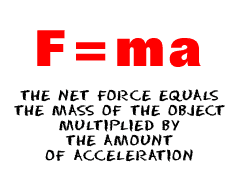It is true that if you weighed yourself while riding an elevator that is descending, the scale will read that you weigh less than if the elevator was going up or not moving at all. But why? Let's use forces to find out!

When you are standing on a scale, there are two forces acting on you: the force of gravity (Fg) and the normal force (N). Gravity pulls you down, and the normal force is the scale pushing you back up. The normal force would be your weight. Fg is equal to the mass of the object (in this case, your mass) multiplied by the gravity constant (9.8 m/s^2). So, your weight when you are not accelerating is the gravity multiplied by your mass, or mg.

Newton's second law of physics states that the total sum of forces acting on an object is equal to the mass times the acceleration. If we consider gravity to be negative because it is pulling you down, the sum of the forces acting on you when you stand on a scale is N - Fg. Applying Newton's second law, we know that N - Fg = ma. If there is no acceleration, N - Fg = 0, and N = Fg. If there is upward acceleration, N - Fg = m(+a), so N = Fg + ma, and the scale reads that you have a greater weight. If there is downward acceleration, N - Fg= m(-a), so N = Fg- ma, and the scale reads that you weigh less! This only occurs when the elevator first starts moving. Once it reaches a constant speed, the acceleration is zero.

No comments:
Post a Comment